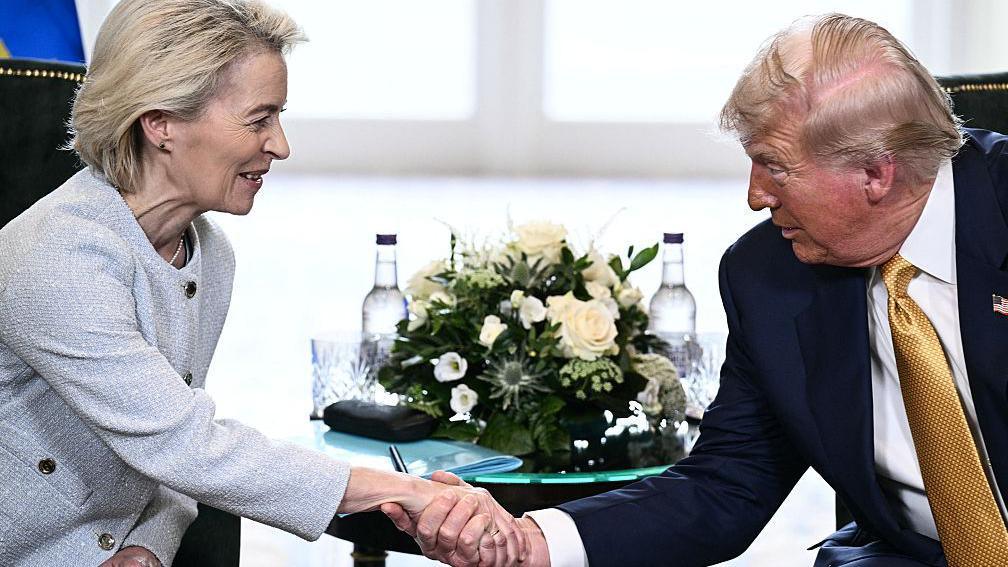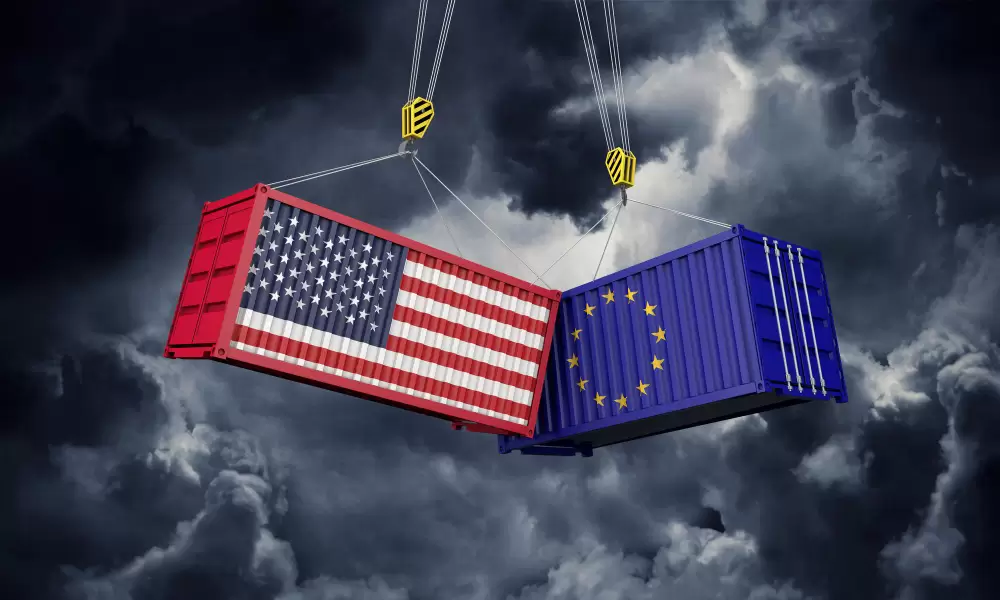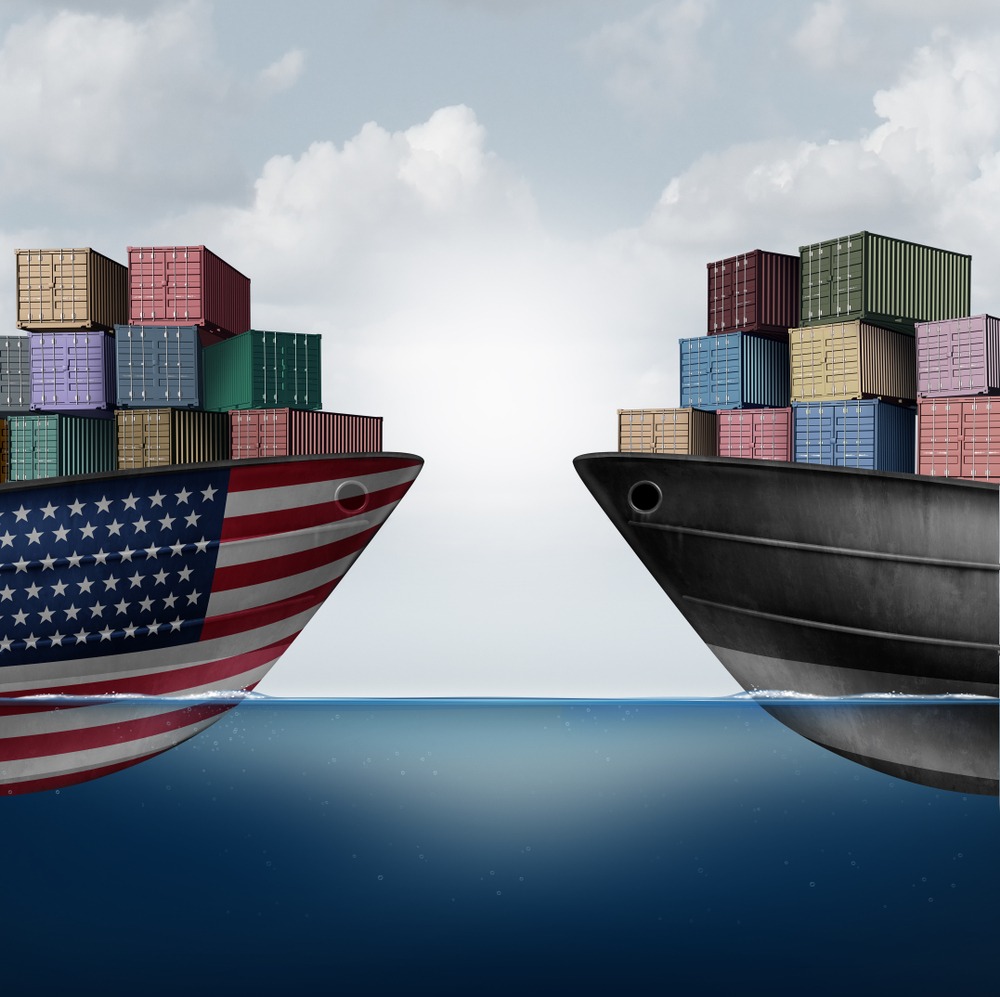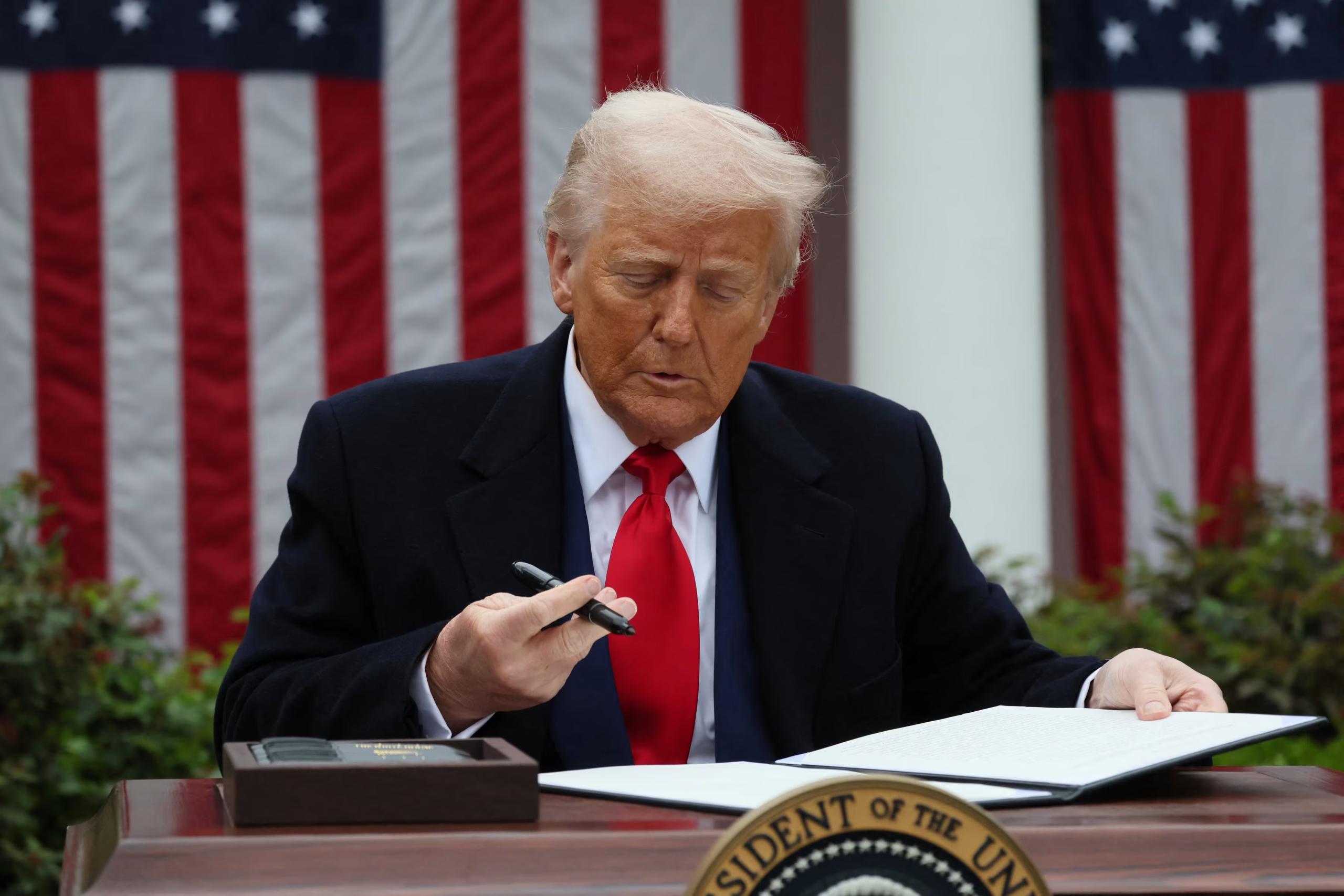A Landmark Deal With Global Consequences
President Donald Trump and EU Commission President Ursula von der Leyen have struck what’s being described as the largest trade framework in history. Announced after tense negotiations in Scotland, the deal imposes new tariffs and alters trade routes between the world’s two largest economies. While details remain sparse, the structure already hints at who benefits—and who loses. EU nations appear to have conceded more, with economists predicting a 0.5% hit to EU GDP, as reported by BBC News.
Trump: Big Win, for Now
President Trump, who campaigned on rewriting America’s trade relationships, now holds what looks like a major victory. The 15% tariff on EU goods—much lower than the feared 30%—allows the U.S. to rake in billions in import tax revenue, and has been met with initial market optimism. Analysts described it as a symbolic high point for Trump’s economic agenda. However, economists have warned that incoming inflation and job figures may quickly test this momentum, according to reporting by AP News.
U.S. Consumers: Hidden Losers
For everyday Americans, the deal may result in higher prices. While a 15% tariff is lower than anticipated, it's still a meaningful increase on previously low or zero import rates. Since importers often pass the burden to consumers, this effectively becomes a tax on shoppers. A $100 European product, for example, now costs $115 upon U.S. entry. This reality has sparked growing concern over cost-of-living increases, which may challenge some of Trump’s campaign narratives.

President Donald Trump and European Commission President Ursula von der Leyen seal the 15% tariff deal with a handshake at Turnberry, Scotland.
Stock Markets: Early Winners
Despite consumer cost concerns, markets welcomed the deal. Major indices in Europe and Asia jumped when news of the agreement broke. Investors cheered the certainty over chaos, viewing the deal as a more stable platform than the tit-for-tat tariffs that previously loomed. This upbeat market reaction was highlighted by MarketWatch, which noted the deal “should put further upside potential into the euro.”
European Unity: Strained
The deal must still be ratified by all 27 EU member states, and early signs point to dissent. France has been especially vocal, with French Prime Minister François Bayrou declaring it a “dark day” for European autonomy, suggesting that the EU has surrendered leverage to Washington. Hungarian Prime Minister Viktor Orbán joined the criticism, mockingly stating Trump “ate von der Leyen for breakfast.” These cracks are viewed as damaging to European unity, especially during broader geopolitical stress, as explained by The Guardian.
German Carmakers: Billion-Euro Setback
The EU's prized auto sector, particularly Germany’s, is among the hardest hit. The 27.5% tariff on EU vehicles entering the U.S. has been reduced to 15%, which is still a sharp rise from pre-Trump norms. Germany, home to BMW, Mercedes, and Volkswagen, is especially vulnerable. The VDA—Germany’s automotive trade association—warned this rate would cost the industry “billions annually.” German Chancellor Friedrich Merz acknowledged the pact as progress, but lamented that it stopped short of true easing.

Trade tensions escalate as the US and EU clash over threatened tariffs, risking a costly transatlantic trade war.
U.S. Automakers: Conditional Win
Trump's push for American manufacturing got a boost when the EU agreed to slash tariffs on U.S. vehicles from 10% to 2.5%. That opens a potential growth lane in Europe for American brands like Ford and GM. However, many U.S.-branded vehicles are assembled in Canada or Mexico, and are now subject to a 25% tariff when re-entering the U.S. This oddity may allow European manufacturers to undercut domestic American brands on home soil.
European Pharma: In Limbo
One of the most confusing sectors in the deal is pharmaceuticals. Von der Leyen claimed they were included under the new 15% tariff cap, but Trump said they were not. A White House source later confirmed inclusion, contradicting Trump. This muddled messaging has rattled industry leaders, particularly in Ireland and Denmark, where drug exports to the U.S. are a major economic driver. The lack of clarity is a disappointment for an industry that hoped for total exemption.
U.S. Energy Sector: Big Winner
Perhaps the biggest financial win comes from energy. The EU has pledged to purchase $750 billion in U.S. energy, including LNG, oil, and nuclear fuels. That’s in addition to $600 billion in promised EU investment into U.S. infrastructure. This massive realignment is part of the EU’s ongoing pivot away from Russian gas, and cements the U.S. as Europe’s primary energy partner.
Aviation and Strategic Goods: Tariff-Free
Not everything in the deal is tariff-laden. Aircraft, plane parts, semiconductors, and some agricultural products will remain duty-free. This includes key U.S. exports like Boeing components and European aircraft engines. Von der Leyen also expressed hope that future talks will bring zero-for-zero agreements on additional goods like wines and spirits.

Container ships face off on the water, illustrating the mounting trade tensions and economic rivalry between the US and the EU.
FAQ / People Also Ask
Will this deal affect inflation in the U.S.?
Yes. Increased tariffs are expected to raise prices on common goods, adding inflationary pressure to the U.S. economy—particularly in sectors like consumer goods, electronics, and autos.
What happens if some EU countries reject the deal?
The agreement must be ratified by all 27 EU members. France and Hungary have already voiced opposition, and if just one member rejects the framework, it could collapse entirely or be renegotiated.
Are U.S. farmers helped or hurt by this deal?
U.S. soybeans, beef, and wheat remain tariff-free, which helps midwestern exporters. However, negotiations over dairy, wine, and other agri-products are still ongoing.
How does this affect the EU’s climate goals?
Importing U.S. natural gas and oil contradicts long-term EU climate policy, but leaders argue it’s a strategic necessity given Russia’s invasion of Ukraine and ongoing energy instability.
The Final Verdict: A Fragile Victory with Far-Reaching Stakes
This US–EU trade framework marks a pivotal moment in global commerce—one where power plays and economic realities collide. While President Trump claims a win, and markets cheer the newfound clarity, the true cost will be measured in how consumers, industries, and political alliances weather the changes ahead. The deal’s mixed bag of winners and losers reveals the complex dance of diplomacy, economics, and national interest that shapes our interconnected world.
Europe’s unity shows cracks under pressure, and some key industries face painful adjustments, but the pact also opens new avenues for cooperation and growth. For now, the deal offers a tentative roadmap amid uncertainty—a reminder that in trade, as in geopolitics, every gain comes with a price. The next chapters will reveal whether this agreement can withstand the test of time or crumble under competing agendas and emerging challenges.















